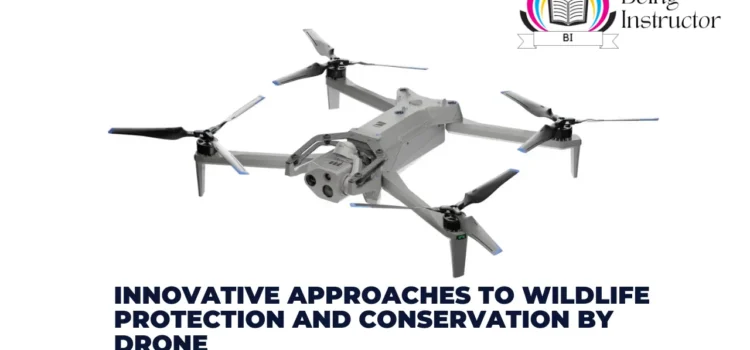The protection and conservation of wildlife have become increasingly critical in the face of habitat loss, climate change, and poaching. Innovations in technology and methodology are paving the way for more effective conservation strategies. Among these technological advancements, aerial surveillance tools like Skydio X10D Drone have emerged as critical assets in monitoring and protecting wildlife across vast and often inaccessible terrains. This article explores various innovative approaches to transforming the landscape of wildlife protection and conservation, showcasing the blend of technology, community involvement, and policy enforcement in safeguarding the planet’s biodiversity.
Use of Drones for Monitoring and Anti-Poaching Efforts
The deployment of drones like the Skydio X10D in wildlife conservation areas has enhanced surveillance capabilities and introduced a new layer of efficiency in monitoring wildlife. These crewless aerial vehicles are equipped with thermal imaging and infrared cameras, making it possible to conduct daily and night operations, a critical advantage in anti-poaching efforts. Drones, such as dense forests, mountains, and remote wetlands, can cover rugged terrains that are challenging and dangerous for humans to navigate. Their presence is a deterrent to poachers who are less likely to operate in areas under surveillance. Moreover, the data collected by drones, including images and videos, can be used to study animal behaviours, track their migration patterns, and monitor environmental changes, contributing valuable insights to conservation science.
Wildlife Corridors and Connectivity Conservation
Wildlife corridors and natural pathways are essential in combating the effects of habitat fragmentation, one of the significant threats to biodiversity. By ensuring that animals can move freely between different habitats, wildlife corridors facilitate access to larger areas for feeding, mating, and migration, which is essential for the survival of many species. The strategic creation and protection of these corridors often involve sophisticated mapping technologies and ecological studies to identify the most critical areas for connectivity. Conservationists work with governments, private landowners, and local communities to establish protected corridors, sometimes involving infrastructure modifications like wildlife overpasses or underpasses across highways. These efforts ensure that ecosystems remain connected and functional, preserving their resilience and biodiversity.
Community-Based Conservation Initiatives
Community-based conservation initiatives recognize that local communities are the custodians of their environments and are critical to the success of conservation efforts. These initiatives aim to empower communities by providing them with the tools and knowledge to manage natural resources sustainably. Education and awareness campaigns help foster a deep connection with local wildlife, encouraging communities to participate actively in conservation. Sustainable development projects, such as eco-tourism or community-managed reserves, provide economic benefits while promoting conservation. By aligning the interests of wildlife conservation with community development, these initiatives ensure the long-term sustainability of conservation efforts, making local communities valuable allies in the fight against biodiversity loss.
Advancements in Genetic Research for Conservation
Genetic research has opened up new frontiers in wildlife conservation, offering unprecedented insights into the genetic makeup of species. This information is crucial for managing captive breeding programs, identifying genetically essential individuals, and understanding the dynamics of wildlife populations. Genetic markers can reveal inbreeding levels, genetic diversity, and population structure, informing conservation strategies to enhance genetic health and resilience. In some cases, genetic research helps identify previously unknown species or subspecies, shedding light on the complexity of biodiversity. Applying these advanced genetic techniques is vital for reintroducing species into their natural habitats, ensuring that reintroduced populations are genetically diverse and have a higher chance of survival.
Policy and International Cooperation for Wildlife Protection
Formulating and enforcing robust conservation policies requires concerted efforts from governments, NGOs, and international bodies. Policies that regulate land use, combat illegal wildlife trade, and protect endangered species are crucial for conservation. International cooperation facilitates the sharing of good practices, resources, and knowledge, enhancing the global response to conservation challenges. For example, the Convention on Biological Diversity and the Ramsar Convention on Wetlands illustrate how international collaboration can create significant conservation gains. These policies and agreements provide a framework for action, guiding the efforts of various stakeholders toward common conservation goals and ensuring that wildlife protection efforts are comprehensive, coordinated, and effective on a global scale.
Leveraging Technology for Global Collaboration and Data Sharing in Conservation
The world has transformed conservation efforts through technology to facilitate global collaboration and data sharing. Innovative platforms and databases have been developed, allowing scientists, conservationists, and policymakers worldwide to share crucial data on wildlife populations, threats, and conservation strategies. This global exchange of information enhances the ability of conservationists to respond rapidly to emerging threats, like poaching, habitat loss, and climate change, by giving access to real-time data and enabling the implementation of coordinated actions across borders.
Technological tools such as satellite imaging, GPS tracking, and AI are being utilized to analyze vast amounts of environmental data, offering insights into deforestation patterns, illegal wildlife trade routes, and the impacts of climate change on biodiversity. These tools improve the accuracy of wildlife monitoring and threat assessment and enable the prediction of future trends, guiding proactive conservation measures.
Moreover, technology facilitates the involvement of the global community in wildlife conservation through citizen science projects and online platforms. These initiatives engage people from diverse backgrounds in data collection, environmental monitoring, and awareness campaigns, fostering a broader understanding of and support for conservation efforts.
Conservationists can amplify their impact by leveraging technology for global collaboration and data sharing, harnessing collective knowledge and resources to address the planet’s biodiversity challenges. This holistic approach underscores the interconnectedness of global ecosystems and the importance of unified efforts in safeguarding the natural world for future generations.
Conclusion
Innovative approaches to wildlife protection and conservation, like a drone for aerial surveillance, are making significant strides in safeguarding the planet’s biodiversity. Combining technology, community involvement, genetic research, and international cooperation offers a multifaceted strategy to address wildlife’s complex challenges. As these innovative methods continue to change and expand, the hope for preserving the world’s natural heritage for future generations remains strong. The commitment to wildlife conservation must persist, adapting to new threats and leveraging advancements in science and technology to ensure species’ survival worldwide.

















